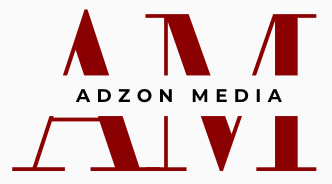
Power and signal cable projects require safe and secure connections regardless of whether you construct a DIY solar system or work on a marine electrical installation or build a portable power station. Heat shrink tubing serves as the solution to this problem. The basic tool heat shrink tubing serves multiple purposes by protecting cables from environmental harm and stopping short circuits while enhancing the appearance of your wiring.
Before starting your heat shrink tubing installation you need to understand several important factors which will help you achieve optimal results. Small details regarding the suitable size selection and proper heat application method will significantly impact your outcomes.
Why Heat Shrink Tubing Matters
Heat shrink tubing serves multiple functions beyond its basic role as protective wrapping. The material shrinks when exposed to heat creating an exact-fit seal which serves as both insulation for cables and their connectors. The process achieves three essential functions:
- Provides Electrical Insulation: The tubing stops electrical shorts from happening while maintaining secure electrical pathways.
- Protects Against Moisture and Dirt: This feature becomes critical when used in marine settings as well as outdoor environments and automotive applications.
- Improves Durability: The protective layer minimizes joint tension in cables while also stopping surface deterioration caused by rubbing.
This additional protective layer functions as a life extension measure for power and signal cables that face tough environmental conditions.
Step 1: Choose The Right Size
One of the most common mistakes is picking tubing that’s too tight or too loose. The general rule: choose tubing with an internal diameter about 20–30% larger than the cable before shrinking.
- Too Small: You’ll struggle to fit it over connectors or terminals.
- Too Large: It won’t shrink enough to create a secure seal.
Check the specifications on your heat shrink tubing kit; most will list both pre-shrink and post-shrink diameters.
Step 2: Understand The Shrink Ratio
Different types of heat shrink tubing display varying shrinking patterns. The standard shrink ratios used in heat shrink tubing consist of 2:1, which minimizes to half its starting dimension, and 3:1 which shrinks to one-third. The 3:1 ratio works best for uneven shapes and larger connectors since it provides a more flexible fit.
Step 3: Prep Your Cable Properly
Before sliding the tubing on:
- The cable needs to be cleaned from dust and grease together with oxidation.
- Prior to sealing, inspect the cable for damage because damaged insulation needs repair.
- The tubing must be measured before heating because it will not come off after shrinking.
Proper preparation establishes the foundation for achieving professional results.
Step 4: Use The Right Heat Source
A heat gun is your best friend here. While some people use lighters or open flames, that’s risky; uneven heating can lead to burns, melted insulation, or incomplete shrinking.
Pro tip: Keep the heat gun moving in a circular motion around the tubing for an even shrink without scorching.
Step 5: Don’t Overheat
Using excessive heat at a rapid pace will harm both the tubing material and the cable underneath. Proper shrinking can be identified by observing how the tubing perfectly wraps around the cable without bubbling, burning, or developing thin spots.
Common Mistakes To Avoid
- Forgetting to Slide the Tubing On First: The classic “oops” moment. Always put the tubing on before crimping terminals or soldering connections.
- Shrinking Too Early: Wait until your cable assembly is fully complete before shrinking.
- Overlapping Too Much: Overlaps are good for sealing, but too much can create unnecessary bulk.
Where Heat Shrink Tubing Shines
You’ll find heat shrink tubing in everything from household repairs to high-end marine systems. Some common uses include:
- Solar Panel Installations: Protecting connectors from weather exposure.
- Marine Electrical Work: Guarding against saltwater corrosion.
- Automotive and RV Projects: Securing wiring harnesses and terminals.
- Signal Cables: Keeping interference low by protecting exposed shielding.
When To Upgrade Your Tubing
If your existing tubing is cracked, discolored, or peeling, it’s time for a replacement. Prolonged exposure to UV, saltwater, or extreme heat can weaken it over time.
Upgrading to high-quality tubing from a heat shrink tubing kit ensures consistent performance and better protection in the long run.
Final Thoughts
Heat shrink tubing serves multiple functions beyond cable neatness since it protects both power and signal cables while ensuring safety and extending their operational lifespan. Proper selection of size and shrink ratio combined with correct cable preparation and heat application, leads to professional-grade seals which protect against typical errors.
To achieve dependable results purchase a superior heat shrink tubing kit which provides durability for harsh working conditions. Check out Selterm’s heat shrink tubing kit selections that work equally well for land-based or sea-based and off-grid applications.




